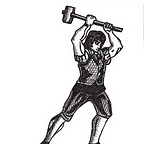Summary: China Miéville, October: The Story of the Russian Revolution, 2017. Intro to Chapter 3.
October: The Story of the Russian Revolution was published in 2017 at the centenary of the Russian Revolution. It emerged alongside a raft of memorial efforts in Britain the same year. Major exhibitions at the British Library, UCL SEES and the Marx Memorial Library demonstrated how 1917 retains a hold over the public imagination. Miéville’s abashedly partisan narrative largely affirms this mythic aura.
Our discussion began by noting how historians across the ideological spectrum have tended to portray the Russian Revolution as an inevitable event. A sclerotic Tsarist regime confronted decades of economic resentment and a culture of seething radicalism. Because reformism proved powerless to contain these elements, revolution may appear to have been a foregone conclusion even by 1914. Miéville seeks to avoid the determinist trap by limiting his chronological range to 1917 and eschewing the ‘great man’ approach in favour of a history from below. The result is a fine-grained narrative rich in contingencies, one that reminds us how identifying revolutionary conditions is far easier after the event than for those living through it.
Chapters one to three of the book deal with the events of February. In Miéville’s rendering, the first rumblings of unrest were characterized by just the kind of spontaneity we would expect from a revolutionary moment. As a testament to his stylistic powers, participants described how exhilarating it was to read about the swelling revolt. The feverish pace of strikes, meetings, and street protests lends intuitive sense to his claim that revolutions are almost impossible to predict as they happen.
Some of us argued that Miéville’s story holds acute contemporary relevance. In 2020, we have witnessed liberal regimes around the world struggle to deliver on their mandate to preserve stability. Miéville reminds us that revolutionary tipping points can emerge suddenly from such voids in liberal strategy, as it did in Russia. However, many aspects of 1917 lack obvious contemporary parallels. The initial convulsions of February were triggered by severe war-time economic strife coupled with a strong workers’ culture built up since the failed revolution of 1905. In Petrograd, food ration lines became ‘crucibles for dissent’ as 30, 000 Moscow workers went on strike. These events built on an undercurrent of popular discontent that had brewed over several decades, a crucial historical backdrop covered in the first chapter.
Besides war rationing and an existing worker culture, our participants added that Russian feudalism itself offered a fertile soil for popular movements. Compare the Russian elites with the English nobility. The latter had modernized and centralized early on, making them capable of managing the social contradictions of capitalism in a way their Russian counterparts were not. The Bolsheviks were proved right in their argument that bourgeois capitalist society was not a necessary precondition for revolution. Indeed, the feudal conditions of early twentieth-century Russia may have helped tip generalized unrest into an all-out revolution.
This prompted a potentially controversial question: were liberals were necessary components of the 1917 revolution? One participant argued that the liberal factions unwittingly strengthened the revolutionary cause over the course of February. For example, the Duma’s Provisional Committee felt forced to seize power from the tsar to restore order, despite continuing loyalty to the regime. Further, the relationship between liberals and the revolutionary socialist party began to display contradictions. While the Duma and Soviet became increasingly polarised rivals, they nonetheless began to unite as the pressure of circumstance drew their interests into uneasy convergence.
Another comparison between British and Russian history centred on their respective labour movements. Drawing on E. P. Thompson’s ‘Making of the English Working Class’, one participant noted that British trade unions internalized parliamentary practices. The momentum of twentieth-century strikes in Britain were ultimately channelled into parliament. The Russian Soviet however retained its autonomy. Much of this derived from the fact that it was made up of workers elected directly from the factory floor, rather than trade unions. In the Russian case, the liberal parliamentary institution became an adjunct to, rather than a bulwark against, the dismantling of the regime.
One problem with the chapters on February is that it does not quite deliver a people’s history of revolution. There are few first-hand accounts of ordinary workers and peasants so that the text is unable to address precisely how the socialist party connected with popular movements. We speculated that ordinary lived experiences of 1917 remain obscure due to a lack of sources in this area. This absence speaks not only of the widespread illiteracy in Russia at the time but also the speed at which the February events occurred. Historical self-consciousness and the myth-making on which it relies are luxuries of posterity.
